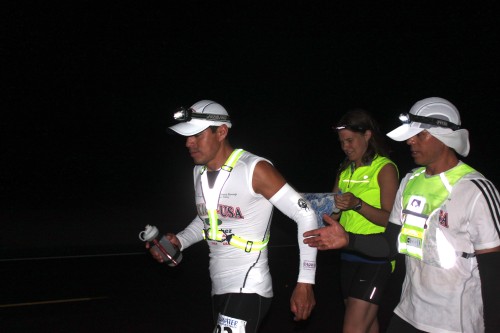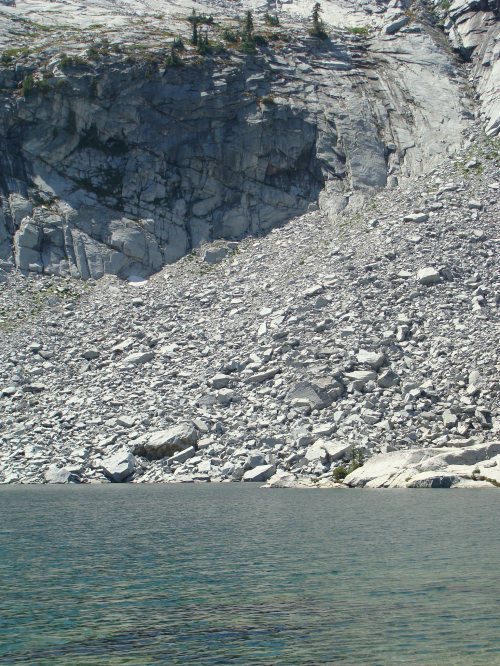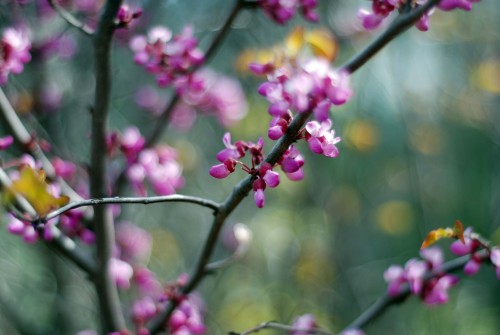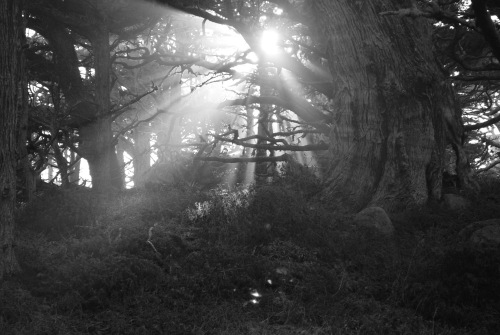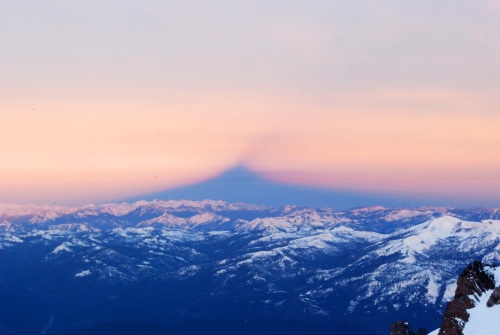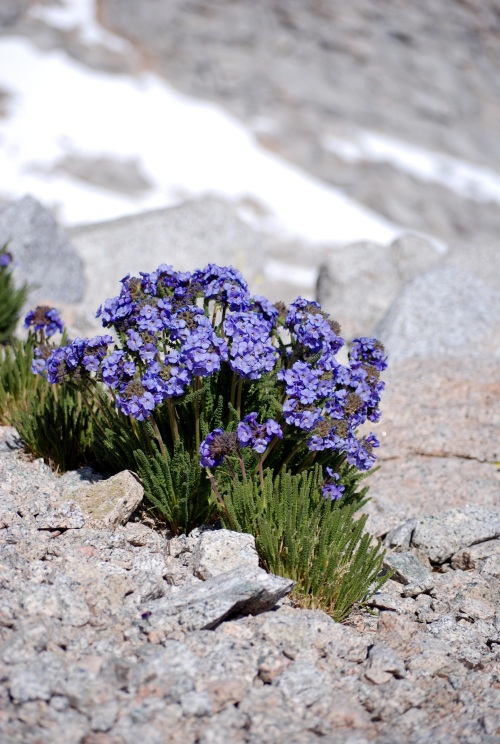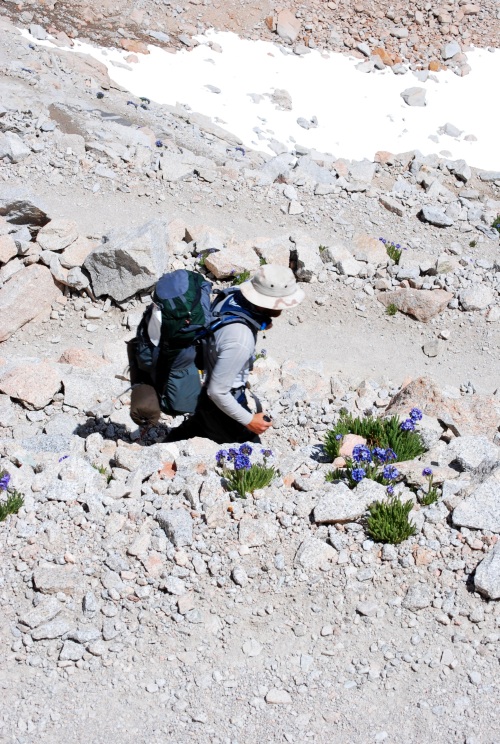When we stepped out of the Suburban on Saturday night it was 108 degrees and the reality of what we were here to do hit home. This was Furnace Springs,Death ValleyNational Park, and we were here to help Juan run Badwater, arguable the hardest foot race in the world. Juan Sanchez, theSt. Helena“shirtless” runner, had asked for our help and because we saw an opportunity to help a fellow athlete, or perhaps challenge ourselves just the same, we accepted and plunged ourselves into the world of extreme ultra-running. 
The festivity that surrounds Badwater is a strange and often times ironic thing. These athletes know that within 24 hours they will have self-inflicted some of the worst pain and mental anguish they have ever experienced, yet, the camaraderie is overflowing with race participants. They may come from different parts of the globe, they may be wearing lederhosen, they may not speak English, and they may be wearing pink tutus, but they are all runners through and through. They have all put the mileage in. They have all felt the pain of running great distances and together they form one of the most passionate, endearing, driven groups of people I have ever seen. If your runner or team was in need not one of these athletes would hesitate to lend a hand, a spray of water or some blister control advice. Oswaldo Lopez, Juan’s friend and the winner of Badwater 2011 passed us just after dark around mile 70. Although his pace was much faster than ours he slowed and ran with us for 15 minutes or more, talking to Juan, offering him words of encouragement before pushing on into the night and his victory in less than 24 hours.
Those who are selected to run Badwater have something that most of us do not. There are, of course, the logistics of completing a minimum of three continuous 100 mile races before you can even submit an application. There is a fierce desire to push your body to the breaking point, to ignore the physical pain and push on through it all, but there is also a softer, quieter element of self-determination and self-awareness that only shows itself during these periods of intense physical stress. Pacing Juan during this 135 mile Challenge of Champions gave me a glimpse into this super-athlete persona of dedication, drive and, in Juan’s case, complete selflessness. He literally gave himself to this race, in body, mind and spirit and gave us the opportunity to experience it with him every step of the way.
The simplicity of running from the lowest and hottest place in the United States to symbolically the highest in the lower 48 is what makes this race so appealing to ultra-runners. It is also what makes it a logistical nightmare. We had spent the week prior pouring over the route, rereading the rules, and planning for the inevitable and the unthinkable. If we were going to make it through this, we weren’t going to be disqualified for an infraction, or have to stop due to something we didn’t pack. We needed two pace cars: the Suburban, our main support vehicle in which we had to contain anything Juan and his pacer might need for the next two days and enough ice to keep those items cold and fresh. We also had a secondary vehicle that would be within a 5 mile radius at all times to deliver any overflow items we may need and to warehouse extra ice, a rare and precious commodity in the desert. To say we were well stocked was an understatement but none of us knew what the next few days would bring and no one wanted to leave that to chance.
As a pacer it was our duty to aid Juan in anything he might need during his 40+ hours of running. This meant running or walking alongside him as well as constantly analyzing his physical and mental state and tailoring our aid stops to address his current condition. Salt tablets where a must. Every hour, or less during the heat of the day, we would stop Juan and administer this all too important little, white pill. Also, there was blister care, bathroom schedules, weight analysis and of course, a steady supply of Corn Nuts, Juan’s secret weapon. A constant intake of fluids and nutrition is absolutely necessary for the success of running Badwater. Dehydration is not the only thing you have to be concerned about in the desert. Your body over heats and it stops excepting nutrition and liquids. You get low on salt or other electrolytes, your muscles cramp and fatigue sets in allowing for more serious conditions to take precedence, including, confusion, high-blood pressure and nausea. All of these are very serious in the desert where the road temperature can exceed 200 degrees, and all can be race ending or worse. This year 12 participants would not see the finish line and several would see a hospital.
The pace crew soon took on the mantra of “whatever it takes” and we did just that. We didn’t sleep for over 50 hours. We ran and walked with Juan and ran and walked some more. We fed him fruit cups, coconut water and popsicles and ate them right alongside him. We sponged him in the 122 degree heat and changed his shoes as his blisters got worse. The repetition of aiding him became a blur of his footsteps, of blinking red lights and water bottles as we whirl winded closer to the finish line. In all we stopped and aided Juan an estimated 175 times in his 33 hour and 9 minute run to 18th place. We told stories, jokes and watched the sunset and the sunrise again. We had in-depth philosophical discussions on the nature of happiness all in the name and effort of seeing him cross that finish line and to see ourselves cross it with him.
Once as I walked with Juan well after midnight on Tuesday morning, I found myself enthralled with his story of dedication and servitude to running. He had lived through a portion of his life in absence of running and came out knowing that he and it could not be apart. Juan is running and running is Juan. You may have glimpsed a bit of this inseparable bond as you see him streak down HWY 29 early in the morning on his way to Yountville or further. This is the Juan I knew before Badwater and after coexisting in this surreal desert reality with him, I find it difficult to picture him any other way. The crazy runner that did not leave an aid stop without thanking us for the help we were giving him. Not once. The runner that did not once fail to squeak out a smile at Katie, the “team mom” as she forcefully made him take his “last” salt tablet or jokingly get on his knees and crawl up the road at mile 130. The runner that gracefully asked Father Mac to pray with him, at the finish line, before the awards and before the pictures were taken. However, I do know that if our eyes catch as he sprints past me on the road that we will have a knowing moment of what we have experienced together, if even for a second, and a bond that can only be strengthened further by the pounding of four soles on a desolate two lane road as the horizon steeps in the golden glow of a desert sunset. Hey, there’s always next year!
Photo’s by Ahren Trumble and David Sanchez, on location.


